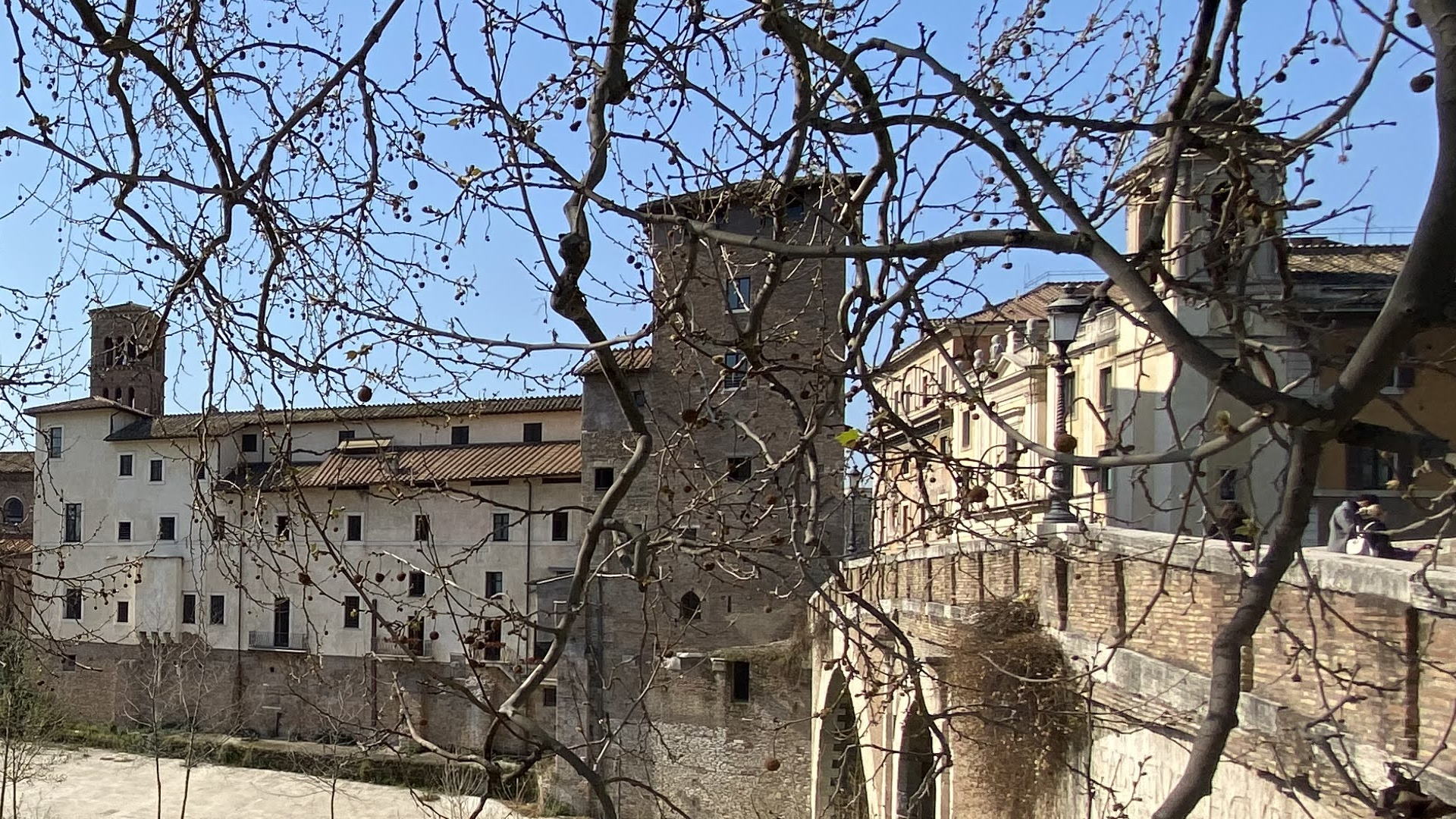
In addition to its monuments, palaces and churches, a city is also made up of the memories it evokes and the life that passes through it. A daily life that, in Rome, has always been marked by rites, holidays, anniversaries, celebrations: a full program of fixed events which, with their load of traditions, represented a (religious or civil) occasion for reflecting, meeting, sharing and having fun, season after season.
If some of them have not resisted the oblivion of time or have lost part of that sense of perfect wonder that they used to give to the Romans and to the many visitors of the city, others are still alive and kicking, even richer today than in the past. And some others, even if born in more recent years, are already part of the modern and contemporary “traditions” of the city.
To fully experience Rome and immerse yourself in its history, month by month we will present you some of the special days and moments of the city, the past and present one – the most heartfelt or awaited events, or even simply the most curious ones.
-
The procession of Sacconi rossi, 2 November
-
National Unity Day and the train of the Unknown Soldier, 4 November
-
St. Martin and the must, 11 November
-
St. Catherine and the pipe players, 25 November
The procession of Sacconi rossi, 2 November
A long red cassock with a pointed hood explains the nickname “Sacconi rossi”, by which the members of the “Veneranda confraternita de' devoti di Gesù Cristo al Calvario e di Maria Santissima Addolorata in sollievo delle Anime Sante del Purgatorio” were popularly known. Based in the Basilica of San Bartolomeo all’Isola and founded in the 18th century, the confraternity included among its charitable professions burying any unclaimed dead bodies found in the Tiber. A burial with a macabre Baroque taste: the bones were flayed and assembled in an artistic and philosophical “memento mori” in the underground cemetery adjacent to the basilica – a custom not uncommon in Rome, as shown by the more famous crypt of the Capuchins on Via Veneto and that of the Church of Orazione e Morte on Via Giulia. As time went by, the confraternity gradually lost many of its members, and by the latter half of the 20th century, it had almost died off. In 1983, however, its legacy was taken up by the Archconfraternity of Santa Maria dell’Orto and the Brothers Hospitallers of Saint John of God. Since then, every 2 November, All Souls’ Day, a mass is celebrated at dusk in the church of San Giovanni Calibita, followed by a torch-lit procession along the banks of the Tiber Island with the members of the confraternity dressed as per tradition. The torchlight procession concludes with the symbolic throwing of a wreath into the Tiber in memory of the souls of the drowned and all unnamed departed because of natural disasters and wars. The underground cemetery also opens to the public for the occasion.
National Unity Day and the train of the Unknown Soldier, 4 November
On 4 November 1918, the Armistice of Villa Giusti took effect: the surrender of the Austro-Hungarian Empire meant for Italy the end of World War I and the completion of the process of national unification that had begun during the Risorgimento era. However, the price paid was very high – 650,000 fallen, not counting wounded and maimed. Three years later, a convoy departing from Aquileia brought to Rome, at the end of a long and moving march, the body of the Unknown Soldier, chosen as a symbol of all the fallen among 11 identical coffins containing the remains of as many unidentified soldiers. Welcomed by the king and the royal family and displayed to the public in the Basilica of Santa Maria degli Angeli, on 4 November 1921, the body was transported on a cannon shaft to Piazza Venezia and solemnly buried at the Altare della Patria, at the Vittoriano, which from then on became the centerpiece of all national solemnities. And the Unknown Soldier is paid homage to by the President of the Republic and the highest offices of state every 4 November, during celebrations of what is now National Unity and Armed Forces Day. Although it has not been a public holiday since 1976, the date remains a staple in the Italian civil calendar: in addition to the laying of a laurel wreath, on the day of the anniversary there is the change of guards at the Quirinale Palace with Corazzieri and the fanfare of 4th Carabinieri Cavalry Regiment in high uniform. To pay homage to all those who fell for the Unification of Italy and keep their memory alive, from 2021, the year of the centenary of the Unknown Soldier, a special convoy also crosses the country to reach Rome's Termini Station on 4 November: the Treno della Memoria, the Train of Remembrance, organized by the Ministry of Defense in cooperation with the FS Group.
St. Martin and the must, 11 November
On a cold and gloomy day in 335, the then soldier Martin came across a half-naked beggar at the gates of Amiens, France: he then cut his cloak in half to share it with the man. Legend holds that at that point the sky cleared up and the temperature became milder: that is why, in Italy, the period of unseasonably warm weather that sometimes occurs around 11 November (the feast day of the saint) is traditionally called the “Summer of St. Martin”. However, the feast of the saint is also symbolically associated with the end of the ripening of the must: this is the period when, as Giggi Zanazzo writes, in Rome, in the Castelli area and beyond, “s’opre la botte e s’assaggia er vino nòvo”, barrels are opened and new wine is tasted. A fresh and sparkling wine with which, in between tastings, it can also happen to get drunk: not by chance, the holy bishop of Tours is also the patron saint of innkeepers, barrel makers and strong drinkers. The extravagant categories with which the saint is associated, however, include deceived husbands, perhaps in reference to the adulterous loves of Mars (of whom Martin is the diminutive). Organized by the Arciconfraternita di San Martino (Archconfraternity of St. Martin), a special, goliardic procession took place in 19th-century Rome on the occasion of the liturgical commemoration of St. Martin: raising praises to the saint, the “felici cornutelli”, cuckolded husbands, passed under an archway placed next to the Palazzo Sciarra of the princes of Carbognano, later demolished for the widening of Via del Corso. The tradition provided the cue for one of those colorful expressions in the Roman dialect, and so, for a superlatively unfortunate husband, it was customary to say that “he does not even pass through the arch of the Carbognani”. Completely different is the spirit of the procession that for the past few years has been taking place through the streets of the Rione Monti and Rione Esquilino: organized by the church of San Silvestro e San Martino ai Monti, the first in the city to be named after a non-martyr saint, a colorful procession of lanterns lights up Via Merulana until it reaches Santa Maria Maggiore, in memory of the torchlight boat ride that accompanied the saint’s body from Candes-Saint-Martin to Tours.
St. Catherine and the pipe players, 25 November
There is no certainty about her historical identity, but legend holds that she was carried by angels to Mount Sinai after being martyred on a spiked wheel, and then beheaded, in the early 4th century. In Rome, two churches are dedicated to the saint of Alexandria: Santa Caterina della Rota and Santa Caterina dei Funari. In this latter church, St. Ignatius of Loyola founded in the 16th century the Conservatory of Santa Caterina della Rosa, also known as the “Compagnia delle Vergini Miserabili Pericolanti”. “Pericolanti”, i.e. in danger of sin, were specifically the daughters of prostitutes, women of ill-repute or in extreme poverty, who came out of the conservatory for safety reasons only to marry or to become nun and on the feast day of St. Catherine, on 25 November, with a long procession to the Basilica of the Santi XII Apostoli. But the saint’s notoriety in Papal Rome was also and above all linked to a “meteorological” condition: for the Romans, 25 November officially marked the beginning of winter. Wood was lit in the fireplaces, heavy blankets were brought out, and the melodies of the “bbiferari” or pifferai (pipe players) – the shepherd-musicians traditionally coming from Abruzzo or Ciociaria – began to spread through the city streets. Wrapped in characteristic capes, with a sugar loaf hat and “ciocia” footwear, they played the Christmas novena in front of holy shrines, in churches and even in homes, in exchange for money, wine and food. It was a tradition awaited with trepidation and affection, although not everyone fully appreciated the sound of bagpipes and shawms from the first light of dawn – “they are people capable of making people hate music”, was Stendhal’s caustic comment. The fact is that, after the Unification of Italy, an ordinance banned pipers from playing in the streets, despite protests from Romans and newspapers of the time. It was only a suspension: the tradition has resumed, albeit in a minor tone, to the present day.
December in Rome. Key dates and events (today as in the past)
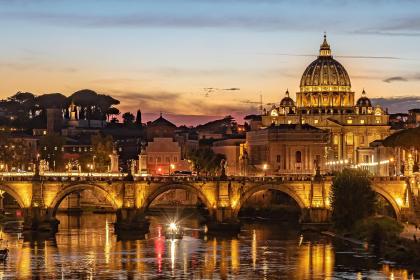
January in Rome. Key dates and events (today as in the past)
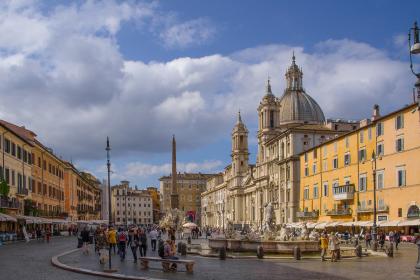
The river Tiber
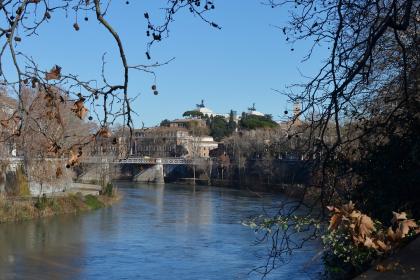
According to legend, the history of Rome begins right here
The Tiber Island
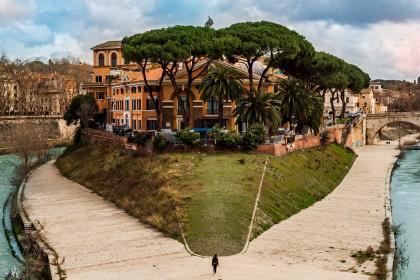
 Condividi
Condividi
The Church of San Bartolomeo all’Isola
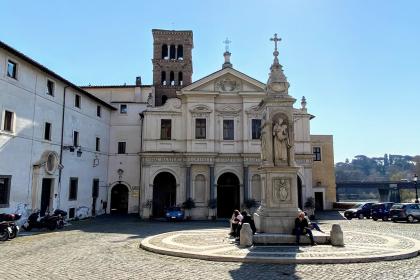
 Condividi
Condividi
Church of San Giovanni Calibita

 Condividi
Condividi
Piazza Venezia
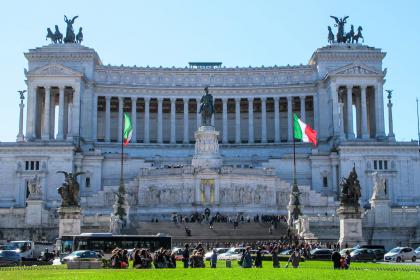
 Condividi
Condividi
Monument to Vittorio Emanuele II (Vittoriano)
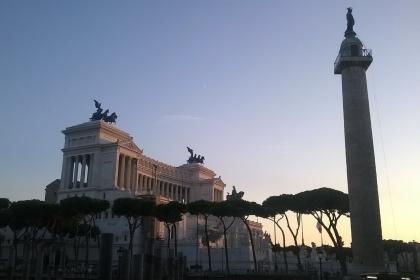
 Condividi
Condividi
The Quirinale Palace and square
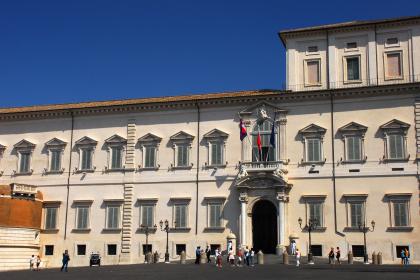
 Condividi
Condividi
A journey through the suggestive villages of the Castelli Romani
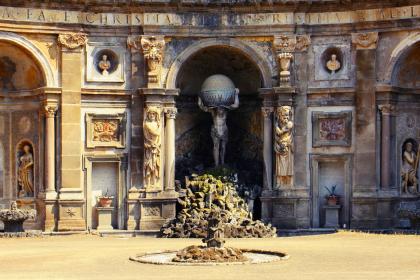
 Condividi
Condividi
Wine drinking culture in Rome

Seven sayings to discover Rome and the Roman dialect
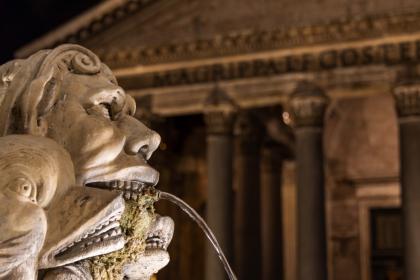
Places and monuments at the center of vivid popular idioms
Rione I - Monti
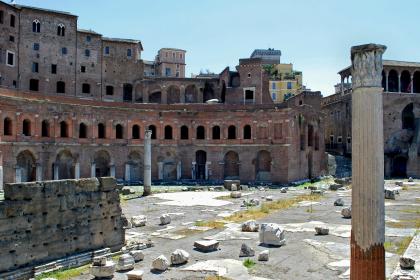
Church of Santa Caterina de' Funari
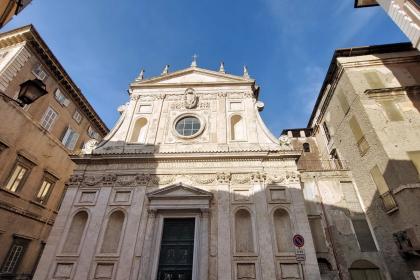
 Condividi
Condividi
Seven Roman guild churches
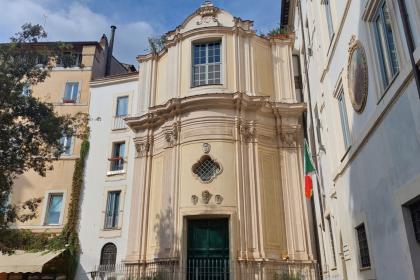
Rediscovering ancient arts and craft, stories and traditions with the guild churches
The Madonnelle of Rome
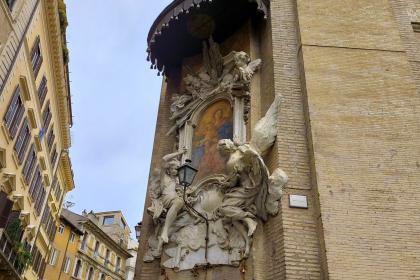
The charming street shrines dedicated to the Virgin Mary and their many stories











































